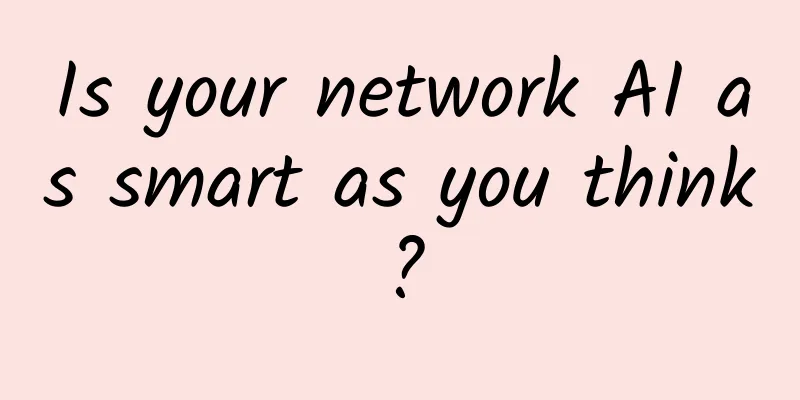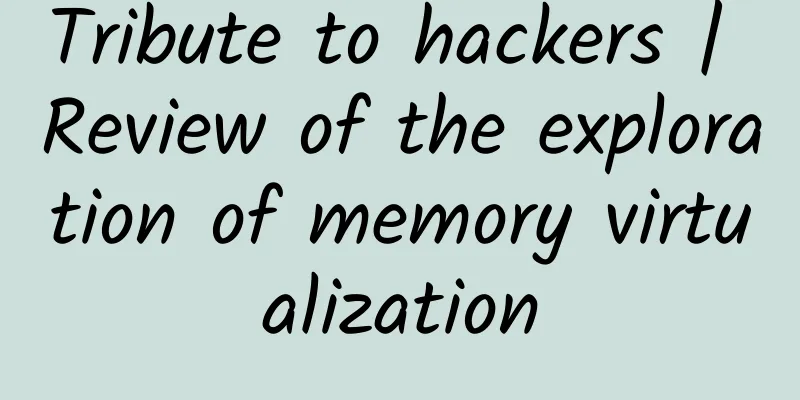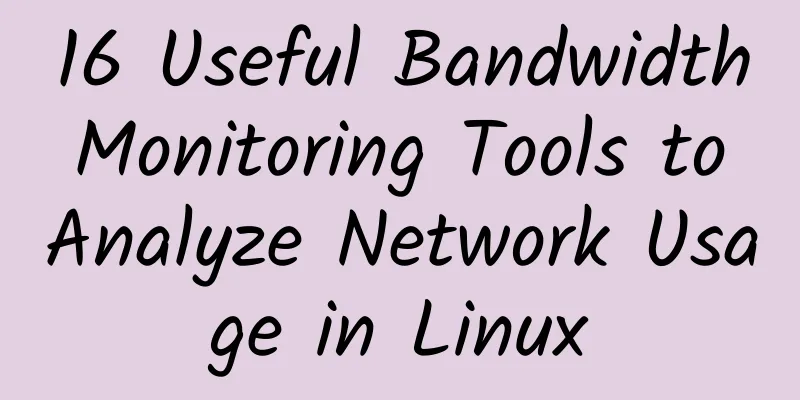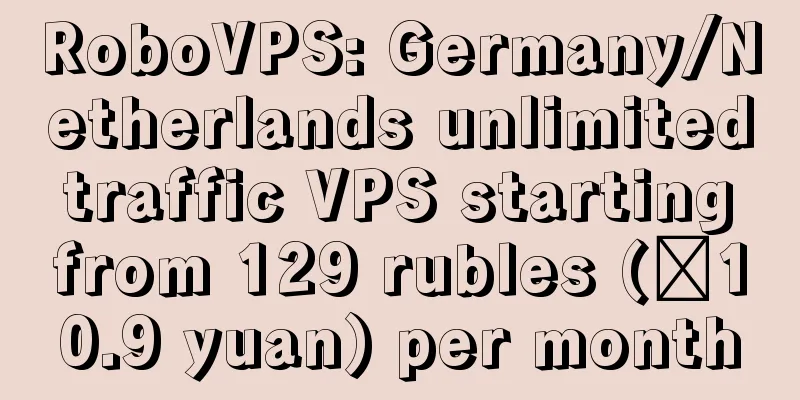Is your network AI as smart as you think?

|
Network operators tell me that in the future, AI will manage their networks. They also tell me that vendors have told them the same thing. The good news is that “somewhat” is true. The bad news is also true. The emphasis is on “somewhat.” To get the most out of AI network management, you have to figure out that fuzzy “somewhat,” and you can do that by thinking of “ants and farmers.” Ants can build extremely complex anthills with all kinds of interconnected tunnels and levels. Do these worker ants have some powerful ant engineer who guides the process? The answer is no! They each perform their simple tasks single-mindedly and complete them instinctively. In fact, there is an "ant engineer", but it is their own DNA that organizes their work to achieve their goals. This is a bit like how most network AIs work. Networks are made up of a bunch of technology “collections,” each a bit like an anthill. There are collections based on vendor, device type, physical location, and connectivity relationships. If you look closely at network AI today, it mostly operates on “collections.” Maybe it manages Wi-Fi or maybe it manages edge elements like SD-WAN or SASE. AI applications used to manage a “collection” will have management goals baked into their DNA (aka their design). Simply put, if we’re a Wi-Fi vendor, we know how Wi-Fi works and we build that knowledge into our AI management. The challenge comes when we stop thinking of collections as individual elements and start thinking of the network as a “collection of collections”. The network is not an anthill, but the entire ecosystem that the anthill is part of, including trees, cows, and many other things. A tree knows how to be a tree, a cow knows how to be a cow, but who knows the entire ecosystem? A farm is a farm, not any combination of trees, cows, and anthills. The person who understands what a farm should be like is the farmer, not the elements of the farm or the suppliers of those elements, and in your network, dear network operator, the farmer is you! Early on, AI developers explicitly acknowledged that the knowledge engineers who build AI frameworks are separate from the subject matter experts whose knowledge shapes the frameworks. In software, and especially DevOps, management tools are designed to achieve a target state, which in our farm analogy describes where the cows, trees, and ants are. If the current state is not the target state, they do something or move something to get closer to the target state. It’s a great concept, but for it to work, we have to know what the target is. At the enterprise network level, we need our Wi-Fi experts to subconsciously pull knowledge into Wi-Fi AI management tools. If the AI vendor doesn’t know how this knowledge was acquired, their AI will be useless. If your hopes for AI are dashed, don’t be! Many network operations staff are perfectly happy with AI managing the collection of technologies that make up their network. After all, why worry about coordinating Wi-Fi and SD-WAN management when anything that happens to one collection can’t be remedied by tweaking another? If this collection-AI model works for your needs, you’re done. The best way to understand whether being an "ant" (at least when it comes to networked AI) is to ask whether your collection of technologies is truly "atomic" - that is, completely independent and self-contained. This comes down to the visibility and control scope of your AI. Basically, collection-specific AIs are independent. Ideally, you want your AI collection ants to do their own thing and not interfere with each other's activities. You don't want an AI in one place to look at another collection and react to conditions without coordination, or two AI collection processes working on the same problem at the same time. If the remediation of a problem in one set might involve doing something with another set, then you need your AI to be able to cover the combination. So if you feel that your network operations center for managing your ecosystem is too expensive and overloaded, and you want to deploy AI to give everyone a break, then you need to take a deeper look at the vendor’s AI proposition. This isn’t easy for enterprises, as more than three-quarters of the people I interviewed this year said they don’t have much, if any, AI expertise in-house. Many feel at the mercy of vendors who promise great things but don’t quite seem to live up to expectations. Is there nothing enterprises can do about this phenomenon? The simplest way to get a handle on using AI across the entire network ecosystem is to look for a manager of managers approach similar to a “manager of managers” (MoM, meaning that the fund of managers of the fund do not directly manage the fund investment, but delegate the fund assets to some other fund managers for management). In modern terms, you can call this “intent modeling”. If each of your technology collections can be treated as a “black box” that models its behavior according to its own SLA, and its AI processes can enforce that SLA, then all you need is for each of these collection AI tools to generate failure reports to a higher-level package. Then, if there is a problem beyond a single technology collection, or if a collection fails and a higher-level fix must be considered, then the package can decide what to do. The challenge here is finding the target state and how to recover when something goes wrong. Remember the “subject matter experts” and “knowledge engineers” mentioned above? It’s hard to build AI solutions for networks because all networks are slightly different, and only the users themselves know what they consider to be “good” or “bad.” Some AI tools may provide machine learning (ML) capabilities to allow your network operations center (NOC) personnel to understand the situation and know what to do; others may use baselines that the network vendor knows generally represent normal options and common remediation actions. There are some issues with both approaches, though. Machine learning can take time, and while your AI system is doing its job, it can further drain your NOC resources. Vendor baselines work best when your network consists primarily of equipment from one vendor. Both can be tuned, but both can conflict with adaptive network behavior. IP networks inherently use topology discovery and do their own thing. Even for NOCs, influencing routing is difficult; they usually need to plan new MPLS routes to do traffic engineering, which AI is unlikely to do. Some companies (including Google) have turned to software-defined networking (SDN) to provide central control of routing, and then AI can control the network by controlling the SDN controller. AI in network operations can trace back to a combination of events to signal an anomaly, and also as a way to implement an effective response. At any level, your potential AI vendor should be able to talk to you about how their product gathers information and how it implements its insights. Dive into the details of both of these things, because no matter how magical AI claims to be, it won't work without these two ingredients. In the end, remember: be a farmer, not an ant, and your position will never be lost due to the emergence and development of AI. |
<<: How big data empowers 5G value operation and maintenance
>>: What changes will the integration of 5G and the Internet of Things bring?
Recommend
2021: Connectivity disruptors
From 5G to Wi-Fi 6, connectivity is opening up ne...
How to enable owners and facility managers to realize smart buildings
Building owners and facility managers are turning...
Talking about IPv6 tunnel technology
IPv6 was originally designed without tunnel techn...
Seize the opportunity of enterprise applications with network slicing
5G is on the rise for a reason. In addition to fa...
[Black Friday] TNAHosting: $9/year KVM-1GB/15G SSD/5TB/Chicago Data Center
TNAHosting's Black Friday promotion includes ...
HostKvm: 20% off lightweight KVM in Hong Kong/Los Angeles, 1G memory package starting at $5.2 per month
HostKvm continues its 20% discount promotion this...
5G Wireless: Market Opportunities and Technical Challenges from Sub-6 GHz to Millimeter Wave
For Massive MIMO systems, 4th Generation GaN tech...
Obstacles to 5G rollout
While 5G has the potential to open up many exciti...
Transitioning from IPv4 to IPv6, you can't miss these knowledge points
[[277315]] Understanding the network model The ne...
Simple test of DogYun Korean data center elastic cloud server
The blog has shared DogYun product information se...
Failure to modernize data center infrastructure increases costs and risk of downtime
Today's data centers are more dynamic than ev...
API Gateway Selection: I use OpenResty!
Today I want to talk to you about the topic of ga...
iWebFusion: Los Angeles 4G memory package starts at $9.38/month, and you can upgrade to 10Gbps bandwidth for $5 more
iWebFusion's VPS price may not seem cheap, bu...
Do you understand the principle of Ethernet data transmission?
[[276059]] Routing is done based on the destinati...
Yunfan Accelerator CEO Tong Yongyue resigns, founder Wang Xijie takes over and sets sail again
[51CTO.com original article] On November 23, 2017...








![[Black Friday] RAKsmart: San Jose servers start at $30/month, Los Angeles servers start at $60/month, Japan servers start at $99/month](/upload/images/67cac494a247b.webp)
